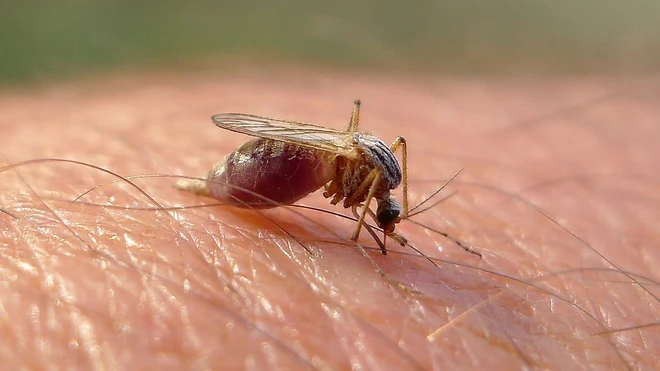When we think of cutting-edge detective work, we envision advanced forensic tools, complex algorithms, and sharp-eyed investigators combing through clues. But sometimes, the most groundbreaking discoveries come from the unlikeliest sources. Imagine this: a tiny mosquito being the key to cracking a crime. Sounds unbelievable, right? Yet, this exact scenario unfolded in Finland, proving that even the smallest details can carry the weight of justice.

The Curious Case of the Finnish Mosquito
Picture a bright summer morning in Seinäjoki, Finland, back in 2008. Local police were investigating a recently recovered stolen car, meticulously searching for clues. But frustration hung in the air—there were no fingerprints, no witnesses, and no obvious trail leading to the thief. Just as hope was dwindling, Inspector Sakari Palomaeki spotted something odd: a plump, dead mosquito lying on the car’s upholstery.
Most people wouldn’t think twice about swatting away a mosquito, let alone considering it as evidence. But Palomaeki had a hunch. What if this mosquito had bitten the car thief and carried a drop of their blood? What if that tiny insect could hold the key to solving the mystery?
DNA in the Belly of a Mosquito
Acting on this unusual lead, the mosquito was sent to the National Bureau of Investigation in Helsinki. There, forensic scientists extracted the blood from its abdomen and performed a rigorous DNA analysis. The results? Astonishing. The DNA matched a known suspect already in the police database. It turned out this individual had a history of other offenses, making it easier to piece together the puzzle.
The suspect initially denied stealing the car, claiming he had merely hitched a ride with someone else. But with this unique evidence in hand, the police had enough grounds to arrest him. While the final conviction remains unclear, the mosquito’s contribution to the investigation became a memorable chapter in forensic history.
A Global Phenomenon: Solving Crimes with Mosquitoes
The Finnish case wasn’t the only instance of mosquitoes aiding criminal investigations. In 2022, police in Fuzhou City, China, cracked a burglary case thanks to the blood from two dead mosquitoes. A thief had broken into a house, stolen valuables, cooked himself a meal, and stayed overnight—giving the local mosquito population a feast. When forensic experts analyzed the blood samples from the mosquitoes, they found a DNA match to a suspect named Chai, who eventually confessed to the crime.
These cases highlight how mosquitoes, often seen as pesky nuisances, can be silent witnesses to crimes. Their ability to draw and store blood creates an unexpected opportunity for forensic science.
The Science Behind Mosquito Forensics
How can such a tiny creature help solve crimes? It all boils down to DNA analysis. Mosquitoes feed on human blood, which contains unique genetic material. When scientists extract and analyze this blood, they can amplify the DNA using polymerase chain reaction (PCR), a common tool in forensic labs. This technique multiplies even the smallest DNA samples, making them easier to study.
Researchers have found that DNA in a mosquito’s stomach remains analyzable for up to two days after feeding. After three days, however, the blood is fully digested, and the DNA degrades beyond recognition. This timeframe provides a valuable window for investigators to collect evidence and link suspects to crime scenes.

A Revolutionary Tool in Forensic Science
Using mosquitoes in criminal investigations isn’t yet a widespread practice, but its potential is undeniable. Scientists like Yuuji Hiroshige, who conducted experiments at Nagoya University, are leading the way in exploring this frontier. Hiroshige and his team allowed volunteers to be bitten by mosquitoes, then studied how long the blood remained suitable for DNA testing. Their findings confirmed that DNA could be reliably identified within 48 hours of a mosquito’s meal.
This groundbreaking research opens up new possibilities for law enforcement, particularly in cases where traditional evidence is scarce. Imagine a crime scene where no fingerprints, footprints, or direct witnesses are available—but a mosquito is. That tiny insect could become a key player in delivering justice.
The Challenges of Mosquito-Based Evidence
As promising as this technique is, it’s not without challenges. For one, the process relies on finding mosquitoes that have recently fed on human blood—a rare occurrence unless the crime scene is in an area with a high mosquito population. Additionally, DNA degradation over time limits the method’s effectiveness, requiring swift action from investigators.
Moreover, the legal and ethical implications of using mosquito DNA as evidence remain a topic of debate. While it’s a fascinating tool, it’s unlikely to replace traditional forensic methods. Instead, it will serve as a complementary approach, providing an extra layer of detail in complex investigations.
A Story Worth Retelling
The tale of the Finnish mosquito is a reminder that inspiration and ingenuity can come from the most unexpected places. Who would’ve thought that a tiny insect could help solve a car theft? It’s a story that feels like a joke but carries a profound lesson: in the world of forensics, every detail matters, no matter how small.
Conclusion
The story of the mosquito that cracked a case isn’t just a quirky anecdote—it’s a testament to the creativity and determination of forensic investigators. From Finland to China, these tiny creatures have proven their surprising value in solving crimes. As science continues to evolve, perhaps mosquitoes will become an even more reliable tool in the quest for justice. For now, let’s marvel at this true story that feels like a joke and appreciate the ingenuity that turns the ordinary into the extraordinary.